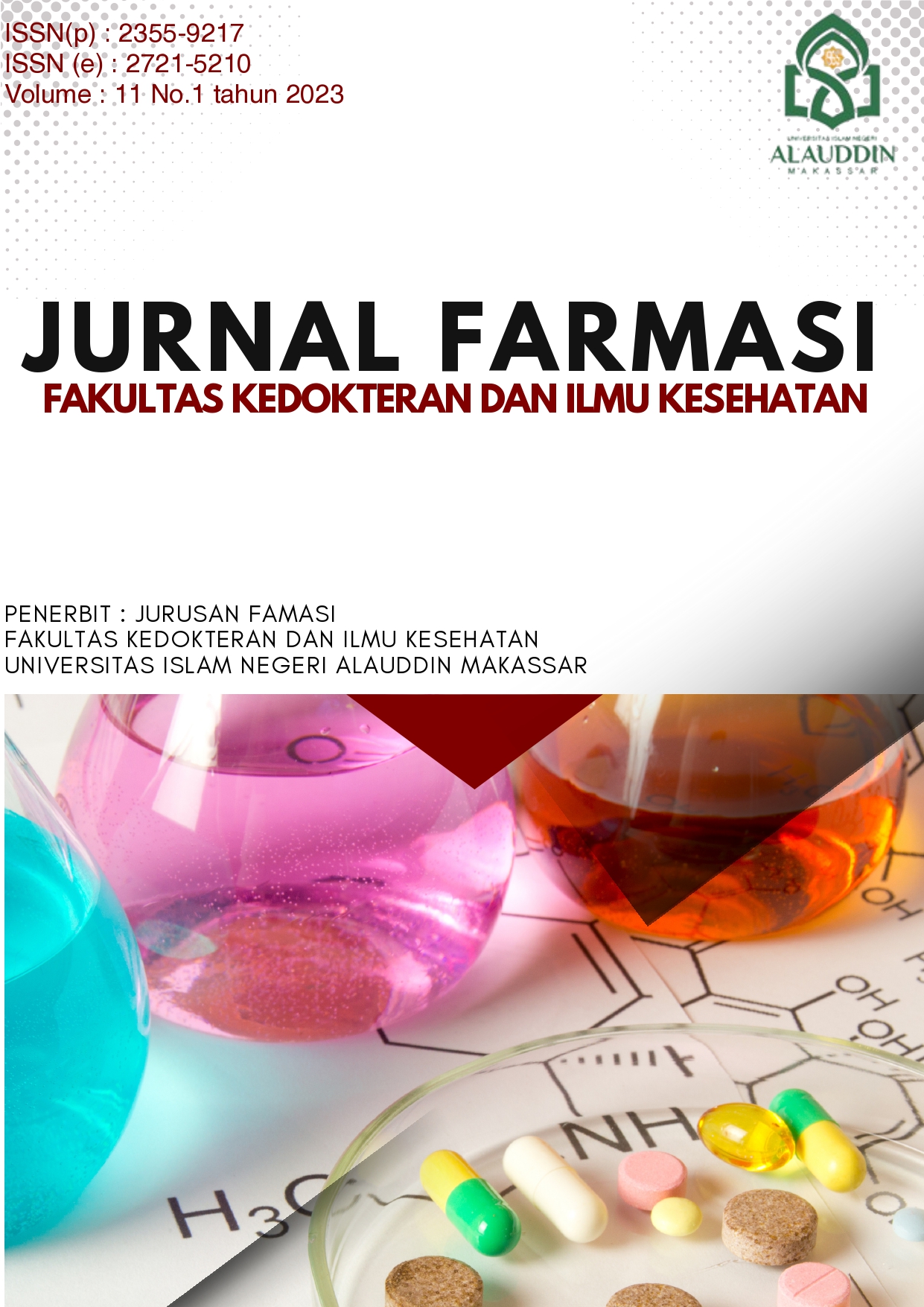Uji Aktivitas dan Analisis KLT Bioautografi Golongan Senyawa Aktif Antimikroba Fraksi Korteks Kelor (Moringa Oleifera)
Abstract
Introduction: Moringa oleifera is a plant from the Moringa genus which has many benefits because it contains many bioactive compounds, so it is often used as traditional medicine. Objective: to determine the antimicrobial inhibitory power of fractions from Moringa cortex extract against several pathogenic microbes including Escherichia coli, Bacillus subtillis, Staphylococcus aureus, Staphylococcus epidermis, Streptococcus mutans, Pseudomonas aeureginosa, Salmonella typhi, Vibrio cholera and Candida albicans. Methods: Extraction was carried out using a multilevel maceration method according to the level of polarity, namely n-hexane, ethyl acetate and 70% ethanol, then the extract activity was screened until it was known that the ethyl acetate extract had the highest antimicrobial activity, so fractionation was carried out. The fractionation results then obtained fractions I, II, III and IV which were tested again for their antimicrobial activity with respective concentrations, namely 1000, 750, 500 and 250 μg/mL. Results: Fraction III had the highest activity as an antibacterial against the bacteria Eschericia coli, Salmonella typhi, Staphylococcus aureus, Staphylococcus epidermis and Vibrio cholera. Conclusion: From the results of Bioautography TLC analysis, it was found that there were 3 clear zone spots which were known to be the class of compounds that were active as antibacterials in fraction III, namely triterpenes, flavonoids, and alkaloids.

